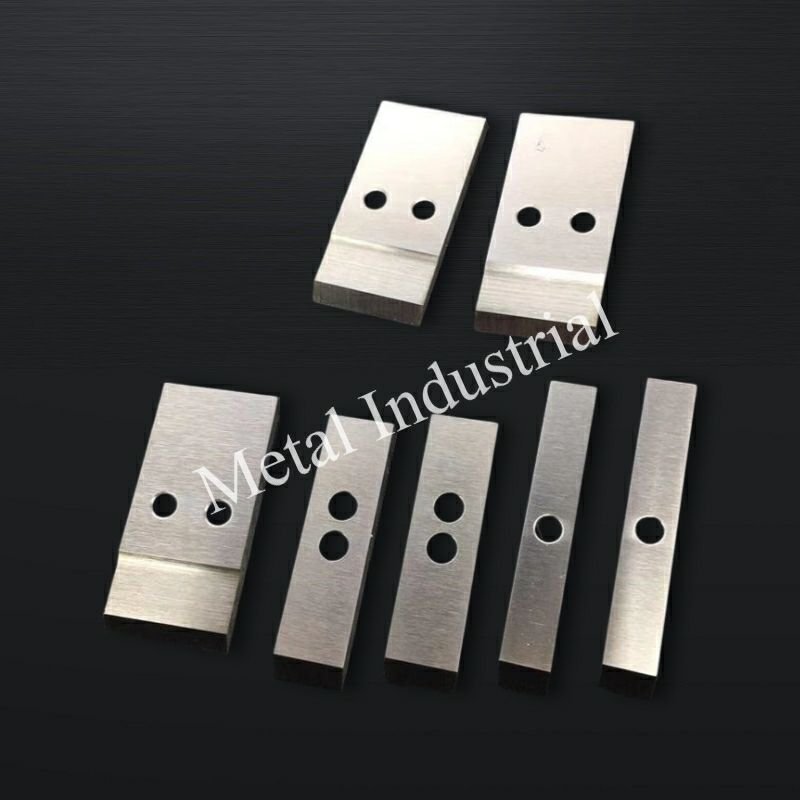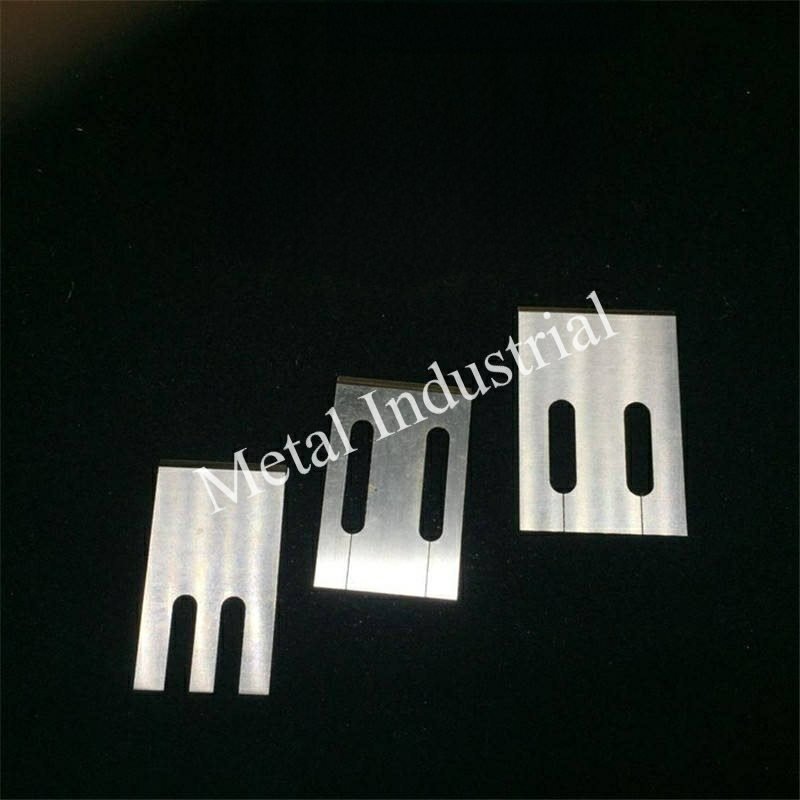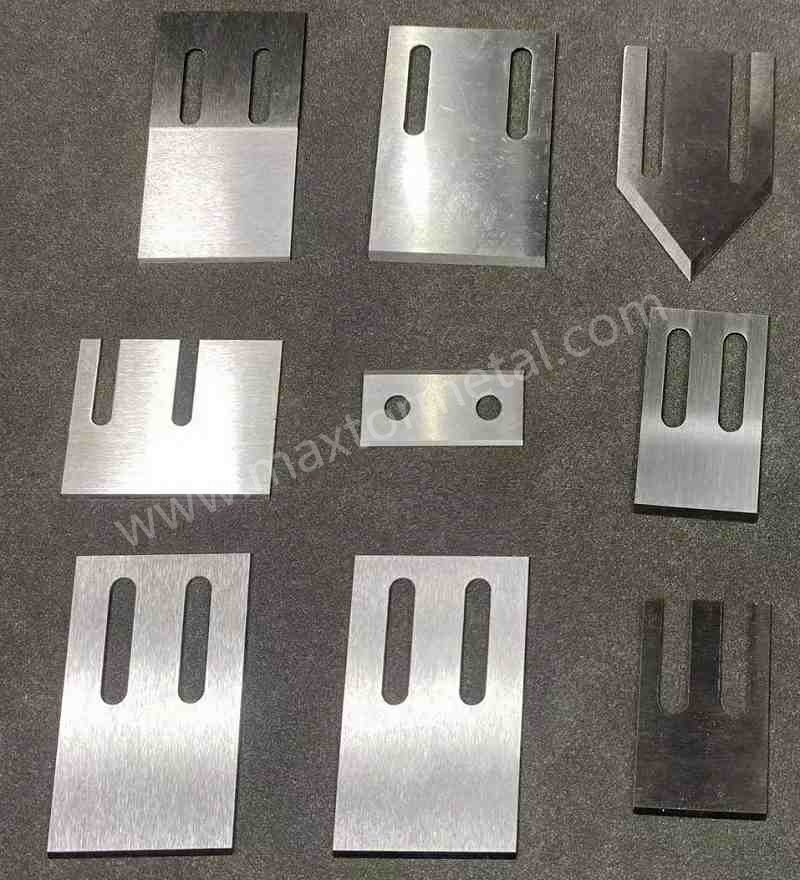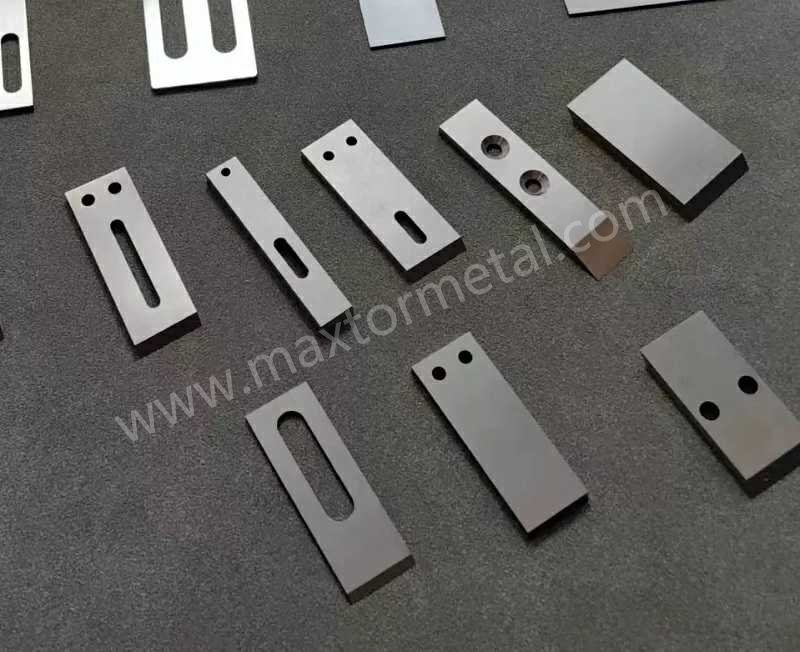
正しい選択 水中ペレタイザーブレード for 2025 is important. It can really help your underwater pelletizing system work better. Some top choices are the Plastic Pelletizer Blade from Nanjing Metal, Gala, BKG, and Nikro blades. These blades work well for many different jobs. You should think about material compatibility, durability, cut quality, cost, and maintenance. These things matter for your underwater pelletizing needs. Recent tests show tungsten carbide and high-speed steel last longer. They also make smoother cuts, especially when making lots of pellets.
Matching the blade to your underwater pelletizing system is smart. It helps lower downtime and saves money. A カスタムブレード can make your system work even better. If you want more information or need to contact a supplier, check out the options you can find.
重要なポイント
- Pick underwater pelletizer blades that match your material. Think about how long they last, how well they cut, their price, and how easy they are to take care of. This helps you get better results and makes the blades last longer.
- Good blades made from tungsten carbide or high-speed steel with special coatings last a long time. They also make pellets that are smoother and all the same size.
- Check, clean, and sharpen your blades often. This keeps your pellets good and stops your machine from breaking down. Look for more fines or pellets that are not even. These signs mean you should change your blades.
- Custom blades from trusted companies like Nanjing Metal can help with special polymers or hard jobs. They can save you time and money over time.
- Use modular systems and set up your machine the right way. Make sure the blade gap and water flow are correct. This helps you get better pellets and work faster.
比較表
主な特徴
正しいものを選ぶ 水中ペレタイザーブレード really matters. Each brand has special features for different system setups. The table below lets you compare the top blades for 2025 side by side:
| Brand/Model | ブレード材質 | Coating Options | Compatible Systems | Durability Level | Max Temp (°C) |
|---|---|---|---|---|---|
| Nanjing Metal Industrial CO., Limited | SK2, HSS, M2, SKD11 | Chromium, TiN | Most mainstream systems | 高い | 350 |
| ガラ | Tool Steel, Carbide | Advanced Surface | Gala pelletizing systems | 高い | 320 |
| BKG Type A | Alloy Steel, Carbide | Anti-wear | BKG, compatible third-party | 高い | 340 |
| Nikro Blades | 硬化鋼 | 標準 | Nikro, select third-party | Medium-High | 320 |
Keeping rotor and bed knives sharp is very important. Solid carbide and advanced alloys help blades last longer. These materials also help reduce wear. The right material and coating can lower fines. This helps make more pellets and better quality.
最適な用途
- Nanjing Metal Industrial CO., Limited:
Best for making lots of pellets, recycling plastic, and custom jobs. These blades fit most system designs. They work well with tough or hot polymers. - ガラ:
Great for regular polymer pelletizing and long runs. These blades are made for Gala system setups. - BKG Type A:
Good for special polymer jobs and BKG systems. These blades resist wear and bending. - Nikro Blades:
Best for medium-sized jobs and general pellet making. Nikro blades work with Nikro systems and some other machines. - Operators should think about cutter speed, feed rate, and knife pressure. These things affect pellet quality and blade life. Special die designs and water cooling help keep pelletizing steady.
Tip: If you have cracked bed knives or worn feed rolls, check the blade condition and if the material matches your needs.
選択要因
Picking the right underwater pelletizer blade is important. Many things affect how well the blade works. These things also change how long the blade lasts. They help decide how good the pellets are. Knowing these things helps operators choose better blades for their machines.
材料の適合性
意味
Material compatibility means the blade must match the polymer type. Some plastics are soft and easy to cut. Others are rough or need high heat.
Impact on Blade Choice
The right blade material makes cutting smooth and stops fast wear. Stainless steel blades work with most normal polymers. Special alloys are needed for rough or hot plastics. Studies show matching blade speed and material helps pellet shape. It also lowers fines. Research says water pressure and cutting speed change pellet shape. When the blade fits the polymer, you get good pellets and fast production.
ブレード材料とコーティング
意味
Blade materials are the metals or alloys used to make blades. Coatings are special layers that make blades harder and last longer. Common materials are tool steel, high-speed steel, and carbide. Coatings like chromium or titanium nitride give extra protection.
Impact on Blade Choice
Blade material and coating change how long blades last. They also affect sharpness and rust resistance. For example, a carbide blade with titanium nitride can do tough jobs and last longer. Reports compare D2 tool steel, tungsten carbide, and stainless steel. Each one has its own strengths. Operators should pick materials and coatings for their polymers and system needs. The best mix gives long life and less fixing.
Durability & Lifespan
意味
Durability means how well the blade handles wear. Lifespan is how long the blade works before it needs changing.
Impact on Blade Choice
A strong blade that lasts long saves money and time. In big factories, blades get used a lot. Tough materials and good coatings help blades last through many uses. Research shows thick die plates and good roller space help pellets last longer. Operators who pick durable blades get steady pellet quality and fewer problems.
Performance & Cut Quality
意味
Performance is how well the blade cuts pellets. Cut quality means the pellets are smooth and even.
Impact on Blade Choice
Good blades make pellets that look the same and waste less. Important things are pellet shape, size, and how many you make. Operators watch cutter speed, melt heat, and die face to keep quality high. Training and taking care of blades also help. When blades cut well, the whole process works better and stays steady.
Tip: Pellets that are the same size and shape help other machines work better and save material.
Cost & Value
意味
Cost is how much you pay for the blade at first. Value is how much you get back for your money over time.
Impact on Blade Choice
Balancing cost and value helps operators pick the right blade. Cheap blades may need changing more often. Better blades cost more but last longer and save money later. Operators should look at both price and how long the blade will last to get the best deal.
メンテナンスの必要性
意味
Maintenance needs are how often and how hard it is to clean, sharpen, or change the blade.
Impact on Blade Choice
Blades that need less care save time and work. Checking blades often and keeping them sharp stops problems. Operators should have extra blades ready and follow the maker’s rules for care. Easy-to-care-for blades are best for places that cannot stop for long. Simple maintenance keeps the pelletizer running well.
Note: Checking blade sharpness and screens often keeps pellet quality high and blades working longer.
Custom Blade Solutions and Manufacturer Recognition
Some jobs need custom blades for specific needs. 南京 Metal is a top blade maker with over 20 years of experience. They design and make custom industrial blades. The company is known for its skilled team and good designs. Nanjing Metal gives custom solutions for clients who want long life and less rust. They also help with easy care. As a trusted maker, Nanjing Metal gives high-quality products and good service.
Top Blades 2025

Nanjing Metal Industrial CO., Limited Plastic Pelletizer Blade
特徴
- These blades are made from SK2, HSS, M2, and SKD11.
- They have coatings like chromium plating and titanium nitride.
- The coatings help stop rust and damage.
- They can handle heat up to 350°C.
- Most underwater pelletizing systems can use these blades.
- You can get them in rotor, stator, or custom shapes.
- Their hardness is between HRC 52 and 65.
- This means they last longer before wearing out.
長所
- These blades stay sharp and strong for a long time.
- You can order special blades for different plastics.
- They do not rust or wear out easily.
- They make good pellets every time you use them.
- You can order blades for special machines or needs.
短所
- These blades cost more at first than regular ones.
- If you want a custom blade, it might take longer to get.
Best-fit Applications
- They work well in big recycling plants.
- They are good for cutting tough or hot plastics.
- They help when you need special blades for new jobs.
- They are best for places that want less downtime.
User Feedback/Case Study
“When we started using Nanjing Metal blades, we had 30% less downtime. Our pellets also got much better.” – Operations Manager, big recycling plant
Unique Selling Points
- Nanjing Metal has made blades for over 20 years.
- Their team makes special blades for hard jobs.
- People know the company for good quality and service.
- Customers can watch their orders being made and buy in different ways.
Gala Underwater Pelletizer Blades
特徴
- These blades use strong tool steel or carbide.
- You can pick special coatings to make them last longer.
- They work in heat up to 320°C.
- They fit Gala underwater pelletizing systems best.
- They are easy to put in and change fast.
長所
- They work well and make good pellets.
- You can install and clean them easily in Gala machines.
- They are easy to find and ship quickly.
- They do not wear out or bend fast.
短所
- You cannot change them much for other machines.
- They may need sharpening more often with rough plastics.
Best-fit Applications
- They are good for normal plastic pellet making.
- They work best in Gala underwater pelletizing systems.
- They are great for medium or big production lines.
User Feedback/Case Study
“Gala blades are simple to use and keep clean. They are perfect for our medium-sized factory.” – Plant Supervisor, plastic maker
Unique Selling Points
- They fit Gala machines without problems.
- The company helps customers all over the world.
- They work well in big, busy factories.
BKG Type A Blades
特徴
- These blades are made from hard alloy steel or tungsten carbide.
- They can have special coatings to stop wear.
- They work in heat up to 340°C.
- They fit BKG and some other pelletizing systems.
- They are made for tough, busy jobs.
長所
- They do not wear out or bend easily.
- They work with many types of plastics.
- You do not have to fix or change them often.
- They always make good pellets.
短所
- They are a little harder to take care of.
- They cost more than some other blades.
Best-fit Applications
- They are good for special plastic jobs.
- They work well in big, busy pellet making lines.
- They fit BKG underwater pelletizing systems best.
User Feedback/Case Study
“BKG Type A blades work great with our special plastics. They last longer than other brands we tried.” – Technical Director, plastics company
Unique Selling Points
- They are made for big, busy pellet making jobs.
- They work well with tough and rough plastics.
- They fit BKG and some other machines.
Comparative Performance Table
| 側面 | Underwater Pelletizers | Strand Pelletizers | Hot Face Pelletizers |
|---|---|---|---|
| ペレットの品質 | They make even pellets with little dust. Water cools them fast. | They make good pellets but more dust and fines. | They shape pellets well but can overheat them. |
| 生産効率 | They work all the time and make lots of pellets. | They work in batches and are slower. | They are faster than strand but slower than underwater. |
| メンテナンス | They need more care because of water and design. | They are easier to take care of. | They need regular checks for heat control. |
| Application Flexibility | They work with many plastics and industries. | They work with most plastics but not all. | They can change pellet size and shape for special jobs. |
- Underwater pelletizer blades make round pellets that are almost all the same size.
- They make less dust and waste, so things stay cleaner.
- The round pellets help other machines work better and pack tighter.
- One factory made 40% more pellets after switching to underwater pelletizing.
- A company that recycles PET bottles also got better results with underwater systems.
Matching Blades to Needs

Picking the right blade for each job helps operators do better work and save money. The next parts give advice for different underwater pelletizing needs.
High-Volume Underwater Pelletizing
Recommended Blade Types
Operators making lots of pellets should use blades made from high-speed steel, tungsten carbide, or strong tool steels. These materials can handle heavy use and stay sharp for a long time. Special coatings like titanium nitride or chromium help blades last longer and stop rust.
重要な考慮事項
- Blades must be tough and resist wearing out for nonstop work.
- Automation, like sensors and pressure controls, makes things easier.
- Modular die-plates let you change blades fast and cut down on stops.
- Good water systems help blades last and make pellets more even.
The table below shows what industry reports say about these systems:
| 側面 | Benefit for High-Volume Operations |
|---|---|
| ブレード寿命の延長 | Water keeps blades working 30% longer. |
| ペレットの均一性 | PET pellets get 21% more even with better systems. |
| ダウンタイムの削減 | Modular parts save up to 22 hours of stops each month. |
| Throughput Range | Systems make 200–7,000 kg/h, great for big jobs. |
| Automation Features | Sensors and controls help the process and need less work. |
Actionable Tips
- Check and change blades often to stop surprise breakdowns.
- Pick blades that last long to keep machines running.
- Use modular systems to swap blades quickly and avoid long stops.
- Watch water bath heat to keep pellets good.
Tip: If you make many different products, modular pelletizers can help you change blades up to 40% faster.
Specialty Polymers
Recommended Blade Materials
When working with specialty polymers, like engineering plastics or biodegradable types, use blades made from top alloys or carbide. Blades with the right angle and smooth finish cut easier and use less energy, which matters for special polymers.
重要な考慮事項
- Some specialty polymers are rough or get hurt by heat.
- Blade angle and sharpness change how easy it is to cut and how good the pellets are.
- Working with blade makers can help you get custom blades for your special polymers.
Studies show that changing blade angle and using better materials helps when cutting specialty polymers. For example, food-safe blades in food factories made more pellets and had less downtime.
Actionable Tips
- Ask blade suppliers for custom blades that fit your polymer.
- Try different blade angles and materials to see what works best.
- Watch blade wear closely when using new or tricky polymers.
Note: Custom blades for specialty polymers can make pellets better and keep workers safer.
コスト効率
Balancing Price and Performance
Operators need to think about blade price and how long they last. Better blades may cost more at first but usually last longer and mean fewer stops, saving money over time.
重要な考慮事項
- Cheap blades might need changing a lot, which costs more in work and time.
- Good blades help make more pellets and waste less, so you get your money back faster.
- Looking at the whole life of the blade helps you pick the best deal.
Industry reports say you should balance buying and setup costs with how long blades last and how much care they need. Making more pellets and stopping less saves money.
Actionable Tips
- Buy better blades if you can, so you do not have to change them often.
- Keep track of how many pellets you make and how much energy you use to see if blades are worth it.
- Check maintenance records to find ways to save money.
Tip: Operators who look at long-term value often make their money back faster and get more done.
メンテナンスが簡単
Maintenance-Friendly Features
Blades that are easy to care for help operators stop less and keep working. Features like tool-free changes, clear wear marks, and coatings that stop rust make care simple.
重要な考慮事項
- Simple care means less work and less training for staff.
- Wear marks on blades help you know when to change them before they break.
- Coatings that stop rust help blades last and need less cleaning.
Teaching staff how to care for blades and having clear rules helps blades last and keeps pellets good.
Actionable Tips
- Pick blades that are easy to take out and put in without tools.
- Teach workers how to check, clean, and sharpen blades.
- Keep extra blades ready so you can swap them fast and avoid long stops.
Note: Doing regular care and training staff helps keep pellets good and blades working longer.
Custom Blade Solutions and Manufacturer Recognition
Some jobs need special blades for unique needs. 南京 Metal is a top underwater pelletizer maker with over 20 years of experience. Their skilled teams make custom blades for clients all over the world. Nanjing Metal is known for quality and new ideas, so many people trust them for custom underwater pelletizer blades.
Maximizing Performance

Installation Tips
Putting in underwater pelletizer blades the right way is important. Operators need to set the blade gap at about 0.1 mm. This small space helps make pellets the same size and cuts down on waste. Blade speed is also important. Most systems work best between 500 and 3000 RPM. The best speed depends on the polymer and blade material. Blades that are sharp cut better and last longer. Always check if blades are sharp before starting.
The polymer melt temperature should be between 190°C and 250°C. This keeps the material moving well. Water flow in the cooling and cutting area should be 6 to 12 liters per minute. This helps pellets get hard fast and not stick together. Operators need to watch die pressure to keep the flow steady. Many videos show how to set these things and explain parts like the cutter hub and cutting chamber.
Tip: Always use the machine’s manual and look at visual guides when setting up. This helps stop mistakes and keeps everyone safe.
Maintenance & Sharpening
Doing regular care keeps blades working well. Operators should check the die plate, cutter hub, and mandrel often. Cleaning these parts removes buildup and stops damage. Sharpen blades when they start to get dull to keep pellets good. Use the right tools to sharpen so the blade edge stays safe.
Blades and die plates can wear out and cause fines or tails on pellets. Grooves on the die-plate cutting face make it hard to cut clean, even with sharp blades. All surfaces should be smooth and not damaged. Operators should also check if the die size is right to stop pellet problems.
Note: Keeping a maintenance log helps track blade shape and plan sharpening or changing on time.
交換用標識
Knowing when to change blades stops bigger problems. Signs are more fines, tails on pellets, or pellets that look uneven. If pellets look wrong, the melt temperature may be too high or the blade may be worn. If cleaning and sharpening do not help, it is time to replace the blade.
Operators should also look for grooves or damage on the die plate. Good product quality needs good blades and the right temperature. Watching for these signs helps stop downtime and keeps work going well.
Picking the right underwater pelletizer cutting tool helps make good pellets. It also keeps production running smoothly. Operators should look at top brands like Gala and BKG. They need to pick a blade that works with their system and the material they use. The comparison table and expert tips can help users choose the best blade for their needs.
よくある質問
What factors affect the lifespan of underwater pelletizer blades?
Blade material, coating, and polymer type all matter for blade life. Operators who take care of blades and pick the right one for each job see blades last longer. This also helps make better pellets.
How often should operators replace underwater pelletizer blades?
How often you change blades depends on how much you make, how rough the polymer is, and what the blade is made of. Most places check blades every week. Operators change blades if they see more fines, uneven pellets, or worn spots.
Can operators use the same blade for different polymers?
Not every blade works for every polymer. Some polymers need special blade materials or coatings. Using the wrong blade can wear it out fast or make bad pellets. Operators should ask their blade supplier for the best choice.
What are the signs of a dull or damaged pelletizer blade?
You might see more fines, tails on pellets, uneven sizes, or more shaking from the machine. Operators should check blades often and sharpen or change them when needed.
Where can operators get custom underwater pelletizer blades?
Operators who need special blades can talk to 南京 Metal, a top underwater pelletizer blade maker with 20 years of experience.
参照
あなたのプラスチック加工ニーズに最適なペレタイザーナイフを見つける


